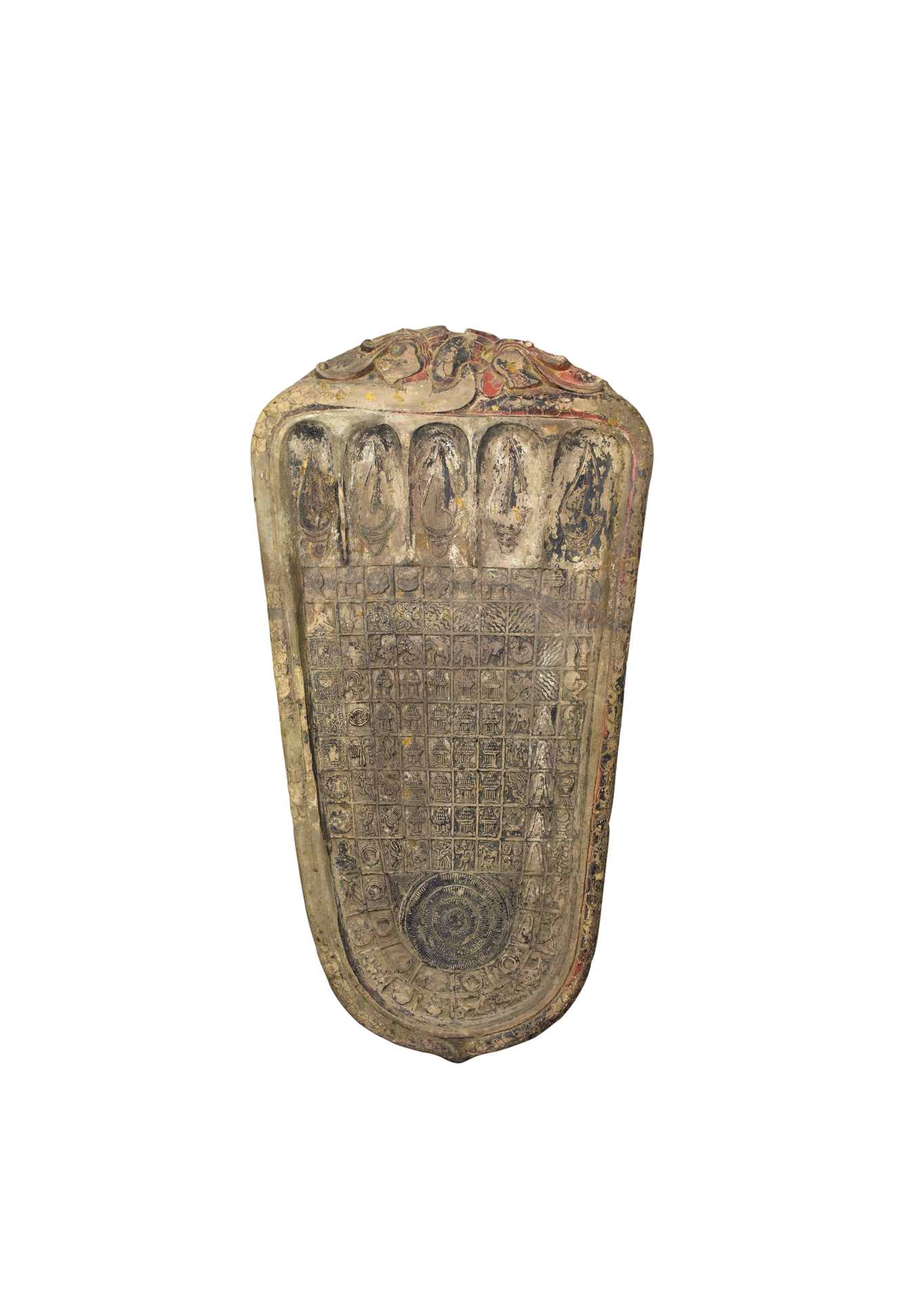Buddhapada Stele
The Buddhapada or ‘Buddha’s footprint’ as an object of veneration began in the initial stage of Buddhism. Instances of disciples paying homage to the Buddha by placing the latter’s feet upon their head are mentioned in early Buddhist canon. The Buddha’s footprint was often used to symbolise the Buddha’s presence in early Indian Buddhist art. Disciples and devotees are posed around the image, indicating that worshipping the Buddha’s footprint has been regarded as equivalent to worshipping the Buddha himself and having the merit of eliminating innumerable bad karma. The worship of the Buddha’s footprint is widespread. Rich examples of Buddhapada are found in India, China, Japan and Southeast Asia. Southeast Asian regions in particular have preserved the largest numbers. The tradition of carving Buddhapada steles and worshipping them still prevails in Myanmar (Burma), Thailand and Ceylon (Sri Lanka).
Buddhapada representations prevailed in Burma after the 12th century, mostly found in monasteries around Pagan. They are typically characterised by a grid-like pattern on the sole. The present Buddhapada stele with a wider top that tapers downward represents a single print of the Buddha’s foot. The patterns on the footprint are carved in low relief against a recessed ground. A pair of Nāgas with head entwined at the apex forms the outer frame of the stele. Traces of red and black pigments are still visible on their body.
The conch shells carved in the five toes symbolise the wide dissemination of the Buddha’s voice (teachings); the thousand-spoked wheel over the heel signifies the perpetual turning of the Dharma wheel; the rest of the sole is gridded into 108 squares enclosing a variety of images including figures, animals, plants, landscape, the sun, the moon and the stars, Mount Sumeru and various weapons and objects of offering, arranged in a swirling manner running clockwise toward the centre. Mountain ranges, rivers, lakes and different kinds of living beings dwelling beneath Mount Sumeru are depicted in the outer rings while architectural images are carved at the centre to indicate the sixteen celestial realms. The Buddhist cosmos centring on Mount Sumeru is graphically represented.
